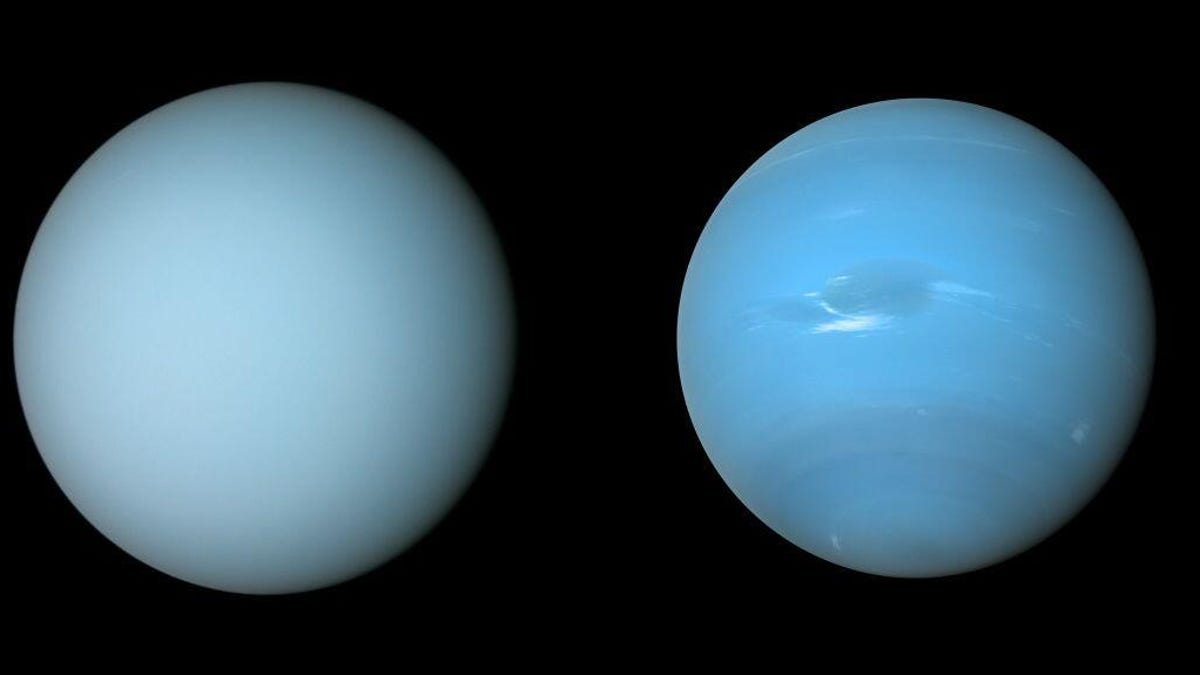Scientists Sort Out Why Uranus and Neptune Are Different Shades of Blue
Mars is red. Neptune is blue. Uranus is hazy and kinda blue, too.
Uranus and Neptune both have the blues, but Uranus is a little less blue than its solar system neighbor. An international team of researchers investigated the atmospheres of the two ice giant planets that seem like they should look like twins and discovered why they wear different hues of blue.
In visible light (what we humans see), Neptune is a more intense blue than Uranus. What's weird is how similar the planets are to each other in terms of size, mass and the gases in their atmospheres. So why aren't they the same color?
Patrick Irwin, professor of planetary physics at the University of Oxford, is the lead author of the study on the planetary hues published in the Journal of Geophysical Research: Planets last week. Irwin is one of the scientists who broke the news to us that Uranus smells like farts and rotten eggs, so he knows a thing or two about ice giants.
The team used data from the Hubble Space Telescope, the NASA Infrared Telescope Facility, and the Gemini North telescope to model the planets' atmospheres with three layers of aerosols at different heights. "The middle layer of haze particles, just above the methane condensation level, is found to be thicker on Uranus than on Neptune, which affects the visible color of the two planets," Oxford said in a statement on Tuesday. Irwin said this is the first model to explain the difference in color.
The cold, gassy planets feature atmospheres made up of hydrogen, helium and methane. Methane ice condenses in the planets' middle layers to create methane snow.
"Neptune has a more active, turbulent atmosphere than Uranus, suggesting Neptune's atmosphere is more efficient at churning up gaseous methane into the haze layer where it can condense on the haze particles and produce this snow," the university said. That vigorous activity thins out Neptune's haze layer, giving the planet a deeper blue look. Uranus's atmosphere, on the other hand, is described as stagnant and sluggish, so it builds up a thicker layer, giving it a more bleached-out appearance.
"We hoped that developing this model would help us understand clouds and hazes in the ice giant atmospheres," said planetary scientist and study co-author Mike Wong of the University of California, Berkeley. "Explaining the difference in color between Uranus and Neptune was an unexpected bonus!"


